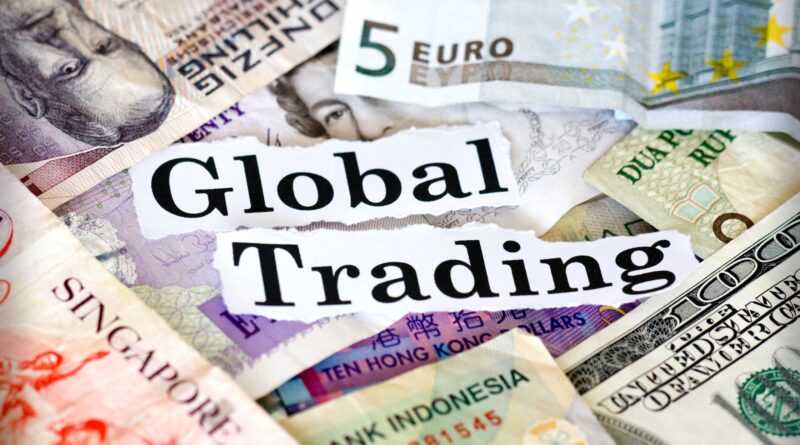Technologies that will change global trade in 2023
Supply chain management has become more complex as supply chains have grown more extended and interconnected. Both regionalization and the need for optimization have been sparked by external forces such as market volatility, pandemics’ effects on production, and the growing concern about the environmental impact of supply chains.
Interestingly, this has prompted the development of trade tech to assist SMEs and other stakeholders in prioritizing supply chain resilience to improve the effectiveness, fairness, and inclusivity of international trade.
It’s vital to talk more about the many kinds of technologies out there and what they’ll do, even though it may be a while before this technology is fully integrated into the trade environment.
In a global survey conducted in December 2020, the WEF (World Economic Forum) identified five emerging technologies with the potential to change the current state of international trade: the IoT (Internet of Things) in supply chains, digital payments; e-commerce platforms; cloud computing; and 5G.
These cutting-edge innovations allow suppliers like trade creditors, insurance providers, and logistics firms to coordinate with one another and encourage interoperability in the ecosystem as a whole, not just for buyers and sellers.
Technological advancements can improve small and medium-sized enterprises (SME) international trade effectiveness, broadening, and fairness.
Table of Contents
Supply Chains Powered by Artificial Intelligence
Many small businesses have rapidly adopted AI-based systems, allowing cutting-edge supply chain management. Models for predicting future demand, full visibility into operations, optimizing inventory levels through dynamic planning, and cutting waste through automation are all part of this category.
To construct prediction models and conduct correlation analysis, each factor is essential for identifying the drivers and moderators of supply chain effectiveness. Data-driven technology and correlation/predictive analytics also aid in anticipating consumer habits and enhancing supply chains as data grows.
Predictive analytics has been around for some time. Still, it has only recently become cheap for small and medium-sized businesses (SMBs), fostering the growth of a new, more technologically aware type of entrepreneur.
Early AI-enabled supply chain management users have reportedly reduced logistical costs by 15%, increased inventory by 35%, and enhanced customer service by 65%.
Following the supply chain problem, more small and medium-sized businesses have committed to utilizing cutting-edge technologies to provide scalable, user-friendly digital experiences for their staff and customers.
From providing staff with cloud-based tools to complete daily tasks to establishing data systems that would provide significant insight into port call estimations, businesses are developing novel ways to regulate their supply chains.
Blockchain
With a blockchain-based supply chain, details like the cost, delivery date, geographical location, product quality, and certification may be recorded in a standardized fashion.
A company’s standing rises due to increased supply chain visibility, better tracking and compliance, and lower overhead expenses. It assures the safety of all digital data transfers along the supply chain and ensures that all parties involved have access to the same data.
Small and medium-sized enterprises (SMEs) can connect with external players in the environment for smooth communication thanks to blockchain & AI technologies that reduce the need for paper documents such as bills, invoicing, tax records, agreements, financial statements, etc.
IoT
An IoT inventory system keeps tabs on essential supplies in real time to facilitate informed business decisions and avoid disruptions. In addition, IoT sensors may be used to monitor multiple performance parameters, which is especially useful for today’s supply chains, which rely on the reliable operation of a wide variety of machinery.
In the supply chain, for instance, predictive maintenance helps firms take action in advance of potential breakdowns, thereby increasing the lifespan of the equipment in question.
Cashless Transactions
Since many interconnected parties are often involved in traditional commerce and supply chain activities, it can be time-consuming and laborious to reconcile and verify data.
The time it takes to process such payments varies, depending on several factors, including the complexity of the transaction and whether or not it requires human participation to validate the information.
Distributed ledgers are helpful because they function as trustworthy shared databases where all users have access to an identical copy of the data. When a payment is made, or a shipment is registered, the transaction is immediately verified, made accessible to all parties involved in the supply chain, and updated.
Moreover, digital signatures can initiate transactions exclusively between verified parties. Because of how this system is built, transferring money across accounts is typically more efficient, less expensive, and safer than traditional manual methods.
These developments also have the potential to dramatically lessen the $3.4 trillion global trade finance gap, which has a disproportionately negative effect on small and medium-sized enterprises (SMEs) that do not keep detailed financial records.
Using the Internet Via Remote Servers (Cloud Computing)
Through efficient supply chain cloud platforms, stakeholders such as exporters, importers, insurance companies, transport carriers, Etc., can be better connected by creating tools and mechanisms that facilitate better communication and the implementation of globally standardized procedures.
Computer-aided logistics
By providing delivery partner and shipper warehouse information, for example, smart packaging solutions meet the need for safe and secure transport of goods. In addition, such projects typically aid businesses in increasing sales and decreasing costs by enhancing vital logistics systems, decreasing theft, and minimizing trash.
Conclusion
In the upcoming decade, we will see the emergence of new technologies that will change global trade. The technologies that are going to have a significant effect on global trade are AI, blockchain, and IoT.
AI has already been introduced in many industries, such as health care, education, and marketing. It is now being introduced into supply chain management which can help businesses to optimize their supply chains and increase their competitiveness in the market.
Blockchain technology is a distributed database system that enables information holders to share data while maintaining security and privacy.
It can track goods through the supply chain process or trace counterfeit products. IoT is a network of physical devices connected via the internet that can collect data from sensors and other devices to automate processes like monitoring inventory levels or detecting intruders.
There is no way to adequately stress the significance of worldwide supply chains in today’s interconnected world. All of the aforementioned trade-tech solutions will likely remain useful in the future of international commerce. They are a digitized part of the future of a commerce ecosystem that prioritizes effectiveness, openness, and fairness.
Authors Bio:
Mr. Mehul Goyal is a professional DGFT Consultant – EPCG License with experience of more than 30 years and specialized in the field and is offering DGFT Consulting Services all over India. He is working with many importers and exporters even before DGFT was instigated in the markets.
Read: What are the Common problems When Doing International Trade?




